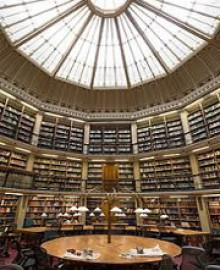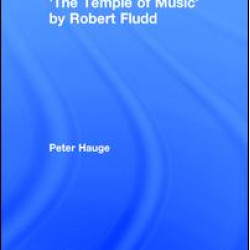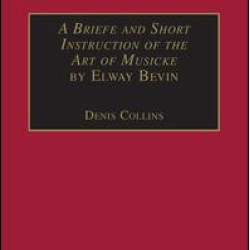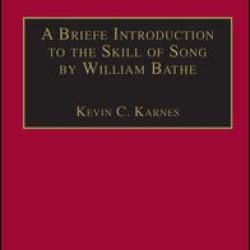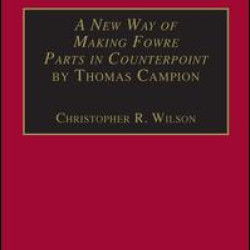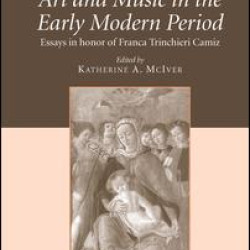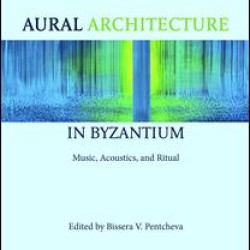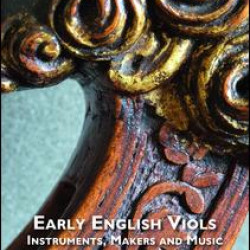Medieval & Renaissance (1000-1600)
Brand: Taylor & Francis
Model: Stock
Robert Fludd (1574-1637) is well known among historians of science and philosophy for his intriguing work. 'The Temple of Music' (1617-18) is one section of his work, and deals with music theory, practice and organology. Many musicologists today have dismissed his musical ideas as conservative and o..
₹8,812.80 ₹11,016.00
Brand: Taylor & Francis
Model: Stock
This is the first study to provide a systematic and thorough investigation of continuo realization styles appropriate to Restoration sacred music. Rebecca Herissone undertakes detailed analysis of a group of organ books closely associated with the major Restoration composers Purcell, Blow and Humfre..
₹5,654.14 ₹7,067.68
Brand: Taylor & Francis
Model: Stock
A Briefe and Short Introduction (1631) is one of about a dozen late sixteenth- and early seventeenth-century English music instruction books that go beyond the basics for beginners, and it is the last of the writings dealing with the art of singing and elementary counterpoint to be published in a mo..
₹8,812.80 ₹11,016.00
Brand: Taylor & Francis
Model: Stock
Although unjustly neglected by modern writers, William Bathe’s contributions to music pedagogy in late sixteenth-century England were profound. Bathe’s A briefe introduction to the skill of song (1596) not only includes the first explication of a four-syllable, non-hexachordal solmization method pub..
₹7,711.20 ₹9,639.00
Brand: Taylor & Francis
Model: Stock
Regarded as one of the most important English music treatises in the seventeenth century, Thomas Campion's A New Way of Making Fowre Parts in Counterpoint reveals progressive ideas about the latent theory of inversions, the fundamental bass, cadences and tonality, and the major-minor octave scale. ..
₹7,711.20 ₹9,639.00
Brand: Taylor & Francis
Model: Stock
The relationship between music and painting in the Early Modern period is the focus of this collection of essays by an international group of distinguished art historians and musicologists. Each writer takes a multidisciplinary approach as he or she explores the interface between music performance ..
₹7,711.20 ₹9,639.00
Brand: Taylor & Francis
Model: Stock
The relationship between music and painting in the Early Modern period is the focus of this collection of essays by an international group of distinguished art historians and musicologists. Each writer takes a multidisciplinary approach as he or she explores the interface between music performance ..
₹3,083.74 ₹3,854.68
Brand: Taylor & Francis
Model: Stock
Aural architecture identifies those features of a building that can be perceived by the act of listening in them. Emerging from the challenge to reconstruct sonic and spatial experiences of the deep past, this book invites readers into the complex world of the Byzantine liturgy, experienced in its c..
₹8,078.40 ₹10,098.00
Brand: Taylor & Francis
Model: Stock
The fifteen studies assembled here grew out of research on south-Italian ordinary chants and tropes for the multi-volume series Beneventanum Troporum Corpus II, edited by John Boe in collaboration with Alejandro Planchart. In the present essays, clerical and ordinary chants and tropes of the Mass (e..
₹2,643.10 ₹3,303.88
Brand: Taylor & Francis
Model: Stock
From the fifteenth century to the beginning of the nineteenth century, devotional music played a fundamental role in the Iberian world. Songs in the vernacular, usually referred to by the generic name of 'villancico', but including forms as varied as madrigals, ensaladas, tonos, cantatas or even ora..
₹3,083.74 ₹3,854.68
Brand: Taylor & Francis
Model: Stock
From the fifteenth century to the beginning of the nineteenth century, devotional music played a fundamental role in the Iberian world. Songs in the vernacular, usually referred to by the generic name of 'villancico', but including forms as varied as madrigals, ensaladas, tonos, cantatas or even ora..
₹8,812.80 ₹11,016.00
Brand: Taylor & Francis
Model: Stock
Music of great importance and quality was performed on viols in sixteenth- and early seventeenth-century England. Thomas Mace (1676) writes that ‘old English viols’ are ideal, and names five English makers than whom ‘there are no Better in the World’. To understand and play this music we need reliab..
₹8,812.80 ₹11,016.00

